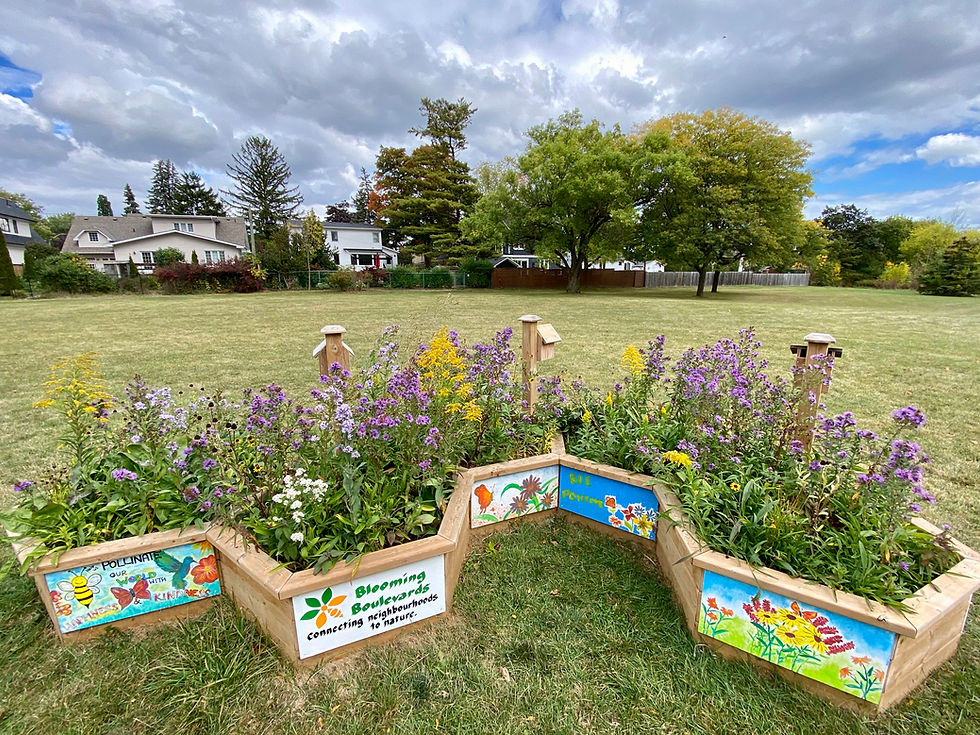Monarda and Powdery Mildew
- Jeanne McRight

- Jul 6, 2021
- 3 min read
Powdery Mildew on Wild Bergamot (Monarda fistulosa) and Bee Balm (Monarda didyma)
Question: The leaves of my bee balm plant are covered with a white substance. The leaves eventually brown and die. New shoots and flowers keep appearing. Should I be concerned?
Answer:
Powdery mildew is the cause. The disease appears as a grayish-white “powder” on the upper surfaces of the leaves, and severely infected foliage may be distorted or drop prematurely. This is a common fungal disease on monarda as well as ornamental species such as lilac, garden phlox, zinnia, squash and other vine crops. The plants will survive but may look unsightly by the end of the season. Planting something a bit shorter in front of the bee balm will help mask the damage while allowing the lovely flowers to be seen.

Above: Last summer my wild bergamot was too crowded, growing together with virginia mountain mint and showy tick trefoil. It developed powdery mildew on the leaves - not a bad case, but you can see the evidence at lower right corner in the photo. I left it alone and the plant remained vigorous. This summer I will thin the plant so it has more ventilation.
Our recommended treatment strategies:
1. Cultural practices can reduce the severity of powdery mildew:
Provide full sun: When planting bee balms, select a site that receives at least 6 hours of direct sun each day. Move plants growing in partial shade to a sunny location.
2. Provide good air circulation: Space plants 2 to 2½ feet apart. Divide bee balms every 2 to 3 years to prevent overcrowding. Further reduce the risk of powdery mildew on susceptible plants by removing ¼ of the stems in spring to increase light penetration and air flow.
3. Treat powdery mildew organically:
You can use an eco-friendly fungicide as soon as the disease is spotted and throughout the remainder of the season.
Bicarbonate Solution - Bicarbonate solutions do work, and are commonly called the Cornell formula. If you do a search for this formula you quickly realize that there is no ‘one’ formula. In fact, there are many versions of the formula but they are mostly similar and consist of the following key ingredients.
- 1 gallon water
- 1 tablespoon backing soda
- 1 tablespoon vegetable oil
- 2 drops dish washing liquid
These ingredients are mixed together and then sprayed on the plant that is under fungal attack. It is popular because it’s simple and most people have easy access to the ingredients. Other ingredients can also be added and various types of oils and soaps are recommended. Many recipes do not include the oil. Baking soda is sodium bicarbonate, a simple salt that can be found in the grocery store. Some people substitute potassium bicarbonate (available on Amazon).
Milk Solution - A solution of milk and water will also work. Try using a 25% solution of 2% milk. Non-fat milk does not seem to work as well.
Neem Solution - The organic fungicide Neem can also be used.
Bee balms and bergamots are great perennials for meadows and wild gardens, along streams and ponds, in woodlands and also in the garden border. The boldness of these monarda species makes them equally good for massing or as an accent, and it mixes well with other summer perennials such as coneflowers and yarrows. The long season of color attracts bees, butterflies and hummingbirds in July and August.
Sources:
Powdery Mildew Treatments https://www.gardenmyths.com/powdery-mildew-treatments/
Use of Baking Soda as a Fungicide http://www.attra.org/attra-pub/PDF/bakingsoda.pdf









Comments